impurity and complexity - moral, economic and otherwise - might be just what a flourishing artistic culture needs
The cult of celebrity and the commercialization of art are not unique to the West. In 19th-century Japan, Kabuki actors and high-priced geishas were idolized by commoners, and the sale of colorful woodcut prints portraying them became a big, competitive business.
In 1842, fearing an erosion of national moral fiber, the government reacted to the mania for Kabuki and for ukiyo-e, the paintings and prints that depicted the fleeting pleasures of life in the entertainment sectors of major cities. Laws were created to limit the extravagance of Kabuki theater and to prohibit yakusha-e (actor prints) and bijin-ga (pictures of beautiful women). It was as if the US had clamped down on Hollywood movies, paparazzi and the tabloids.
Looking at Japanese prints today, you might not realize what a rough-and-tumble commercial world they came out of. Their formal elegance, poetic beauty and technical refinement suggest a more serene, creative environment. So Utagawa: Masters of the Japanese Print, 1770-1900, an exhibition of many splendid prints at the Brooklyn Museum, offers a useful and informative corrective.

Organized by Laura Mueller, a doctoral candidate in Japanese art history, the show presents 73 woodblock prints from the Van Vleck collection, a renowned repository of more than 4,000 Japanese prints owned by the Chazen museum. With 22 more prints from the Brooklyn Museum's collection, the exhibition tells the story of a group of artists that dominated the ukiyo-e print business for much of the 19th century.
It is not a masterpiece show, though there are some terrific works in it. Utagawa Toyokuni's Fireworks at Ryogoku Bridge (1825) is spectacular. On a 76cm square made by conjoining six prints, it depicts yachts loaded with languid geishas passing under a great wooden bridge, on which a crowd has gathered to observe fireworks bursting against the night sky. With its scores of lively people, precisely delineated details and blocky diagonals thrusting every which way, it is a marvel of formal compaction.
Also extraordinary is Toyohara Kunichika's dramatic wide-angle picture from 1894 of an actor dressed in a sumptuously patterned costume surrounded by vividly colored flames. With a fierce expression on his face, he poses with extended arms; holding a sword in one hand, he prepares to commit seppuku, or ritual suicide.
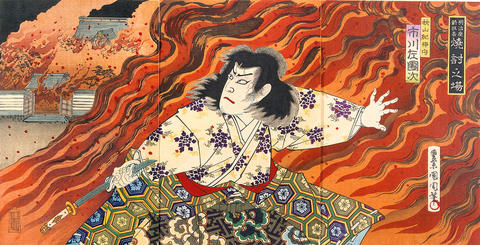
The exhibition's sole example of the popular erotica called shunga warrants a close look too. Produced in 1851 by Utagawa Kunisada, An Illustrated Account of Coupled Genji consists of three lavishly printed volumes, with double-page spreads showing men and women in luxurious robes engaging in sexual intercourse with delightful urgency.
There are many more compelling works in the show, including land- and seascapes by Utagawa Hiroshige, one of the most famous of all ukiyo-e artists. But there are comparatively nondescript works, too. Prints from the 1770s by Utagawa Toyoharu are historically significant because he founded the Utagawa school and because of his innovative use of Western-style deep perspective. But his blandly illustrative works lack the bold, sensuous qualities of prints by his immediate followers Utagawa Toyohiro and Utagawa Toyokuni.
Judging by the exhibition catalog, which has color reproductions of 213 prints, many quite beautiful, a larger and aesthetically superior exhibition could have been assembled from the Van Vleck collection. But Mueller's intent was something other than a "greatest hits" show. She wanted to tell the history of the Utagawa school and, in so doing, convey something of the complexity of the Japanese printmaking business in general.
So to get the most out of the show you need to read the exhibition labels, the text panels and, most important, the catalog's scholarly essays. You will discover, for example, why there were so many artists named Utagawa: it was the Japanese custom for successful apprentices to take the names of their revered masters.
You will also learn how Utagawa Toyoharu's first two students gravitated toward separate areas of specialization: Toyokuni into Kabuki actor prints and Toyohiro into landscapes. Subsequent generations of artists further diversified - into warrior prints, mythic parodies and other genres - and they sometimes collaborated. Prints in the show, for example, show how Hiroshige and Kunisada combined transcendentally beautiful landscapes and gorgeously attired women.
The reading material provides insight into the complex relationships among artists, craftsmen who cut the wooden blocks, printmakers who pulled the prints, and patrons and publishers who provided financing. Through the artists' strategic efforts, the name Utagawa became a brand so powerful that today more than half of all surviving ukiyo-e prints are from the Utagawa school.
Much of what makes this exhibition enriching may be missed by skipping the catalog. That's all right, because the show is rewarding enough visually. But those who do the reading may emerge with an idea worth thinking about in regard to art today: that an environment of impurity and complexity - moral, economic and otherwise - might be just what a flourishing artistic culture needs.
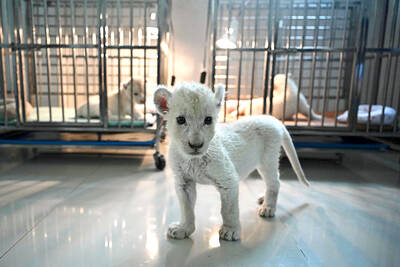
Behind a car repair business on a nondescript Thai street are the cherished pets of a rising TikTok animal influencer: two lions and a 200-kilogram lion-tiger hybrid called “Big George.” Lion ownership is legal in Thailand, and Tharnuwarht Plengkemratch is an enthusiastic advocate, posting updates on his feline companions to nearly three million followers. “They’re playful and affectionate, just like dogs or cats,” he said from inside their cage complex at his home in the northern city of Chiang Mai. Thailand’s captive lion population has exploded in recent years, with nearly 500 registered in zoos, breeding farms, petting cafes and homes. Experts warn the
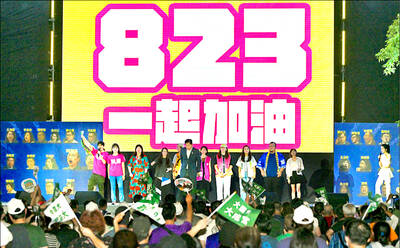
The unexpected collapse of the recall campaigns is being viewed through many lenses, most of them skewed and self-absorbed. The international media unsurprisingly focuses on what they perceive as the message that Taiwanese voters were sending in the failure of the mass recall, especially to China, the US and to friendly Western nations. This made some sense prior to early last month. One of the main arguments used by recall campaigners for recalling Chinese Nationalist Party (KMT) lawmakers was that they were too pro-China, and by extension not to be trusted with defending the nation. Also by extension, that argument could be
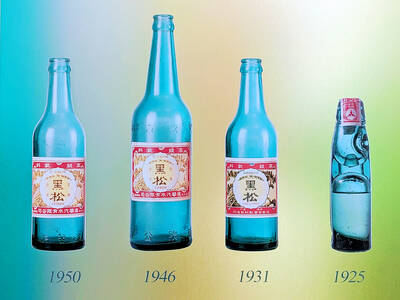
Aug. 4 to Aug. 10 When Coca-Cola finally pushed its way into Taiwan’s market in 1968, it allegedly vowed to wipe out its major domestic rival Hey Song within five years. But Hey Song, which began as a manual operation in a family cow shed in 1925, had proven its resilience, surviving numerous setbacks — including the loss of autonomy and nearly all its assets due to the Japanese colonial government’s wartime economic policy. By the 1960s, Hey Song had risen to the top of Taiwan’s beverage industry. This success was driven not only by president Chang Wen-chi’s
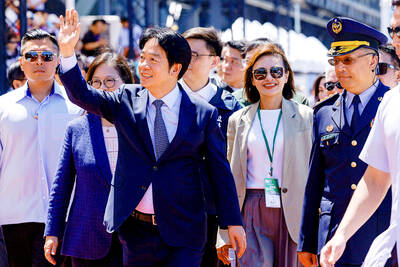
Last week, on the heels of the recall election that turned out so badly for Taiwan, came the news that US President Donald Trump had blocked the transit of President William Lai (賴清德) through the US on his way to Latin America. A few days later the international media reported that in June a scheduled visit by Minister of National Defense Wellington Koo (顧立雄) for high level meetings was canceled by the US after China’s President Xi Jinping (習近平) asked Trump to curb US engagement with Taiwan during a June phone call. The cancellation of Lai’s transit was a gaudy